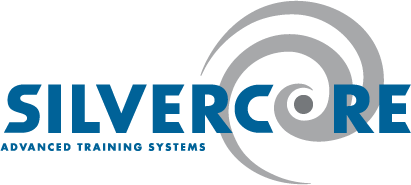As our country’s oldest and largest safety training business of its kind, we have trained more outdoor enthusiasts, athletes, hunters, sports shooters and armed professionals, than any other company in our sector in Canada.
As you can imagine, in Silvercore’s endeavours and experience we know very well just how confusing it can be when you are first starting your journey to obtaining licensing, whether it be for your firearms licence, hunting licence, training, permits or otherwise.
As such, we’ve created a list of different acronyms, variations of them and terms that you may run into in the process of becoming more knowledgeable in the firearms industry to help make things much clearer for you.
PAL or P.A.L. – Possession and Acquisition Licence
This is the current form of firearms licensing in Canada and the term which is most commonly used. It can refer to a Non-Restricted Firearms and/or Restricted Firearms Licence. It was put in place in 1995 when it replaced the term FAC (more to come on this below).
RPAL or R.P.A.L. – Restricted
This is also the current form of firearms licensing in Canada and is really just another term which is somewhat interchanged with PAL. It refers to a Restricted Firearms Licence.
POL or P.O.L. – Possession Only Licence
This is the term used for individuals with a licence in Canada which cannot obtain firearms, but only possess them. POL’s were actually transferred to PAL’s in 2015 under the Common Sense Firearms Licensing Act
FAC or F.A.C. – Firearms Acquisition Certificate
This was the old form of firearms licensing in Canada and term which is less commonly used, but still relatively known and used amongst older generations due to when it was valid (1977 – 1995). These have all now since expired and will need to be replaced by a PAL.
CFSC or C.F.S.C. – Canadian Firearms Safety Course
This is the required training set forth by the Canadian Firearms Program and RCMP for individuals to be able to obtain a Non-Restricted Firearms Licence or PAL.
CRFSC or C.R.F.S.C. – Canadian Restricted Firearms Safety Course
This the required training set forth by the Canadian Firearms Program and RCMP for individuals to be able to obtain a Restricted Firearms Licence or RPAL.
NR – Non-Restricted
This refers to a classification of a firearm and typically means long guns such as rifles or shotguns. This is not always the case however and there may be firearms which are exceptions based on barrel length, calibre discharged, etc. Specifics relating to the classification of Non-Restricted Firearms can be found on the RCMP’s website here.
R – Restricted
This also refers to a classification of a firearm and typically means firearms such as revolvers or handguns. Specifics relating to the classification of Restricted Firearms can be found on the RCMP’s website here.
Prohib- Prohibited
This also refers to a classification of a firearm. Specifics relating to the classification of Prohibited Firearms can be found on the RCMP’s website here.
CFP- Canadian Firearms Program
The Canadian Firearms Program, also known as the Canadian Firearms Centre is a federal program which falls under the RCMP and is typically responsible for firearms licences and regulations in Canada.
CFO- Chief Firearms Officer
The Chief Firearms Officer is provincial body which is responsible for the issuance of PAL’s to individuals in that province, ATT’s, ATC’s Firearms Transfers, and Guns Show Sponsorship approvals. There are different CFO’s per province and a list of these and their contact information can be found on the RCMP’s website here.
ATT or A.T.T. or LATT – Long Term Authorization to Transport
A Long Term Authorization to Transport is a requirement for individuals which possess a valid RPAL and wish to purchase, possess, or transport a restricted firearm.
In order to obtain an ATT, the individual meeting the requirements above, must provide proof of a valid membership with a recognized gun club or range in order to meet the requirements of the CFO.
This proof of membership is typically provided in form of a letter from your club or range which you have a valid membership with.
ATC or A.T.C – Authorization to Carry
An Authorization to Carry is a special permit issued by the CFO in your province under the Firearms Act. This permit will allow an individual to lawfully posses and carry a restricted, or prohibited firearm, which is readily accessible to them for use. This may be issued in the case of it being a requirement for your line of profession, for example, an armoured car guard may receive this permit.
WATC or W.A.T.C. – Wilderness Authorization to Carry
A Wilderness Authorization to Carry is a special permit issued by the CFO in your province under the Firearms Act. This will allow an individual to lawfully posses and carry a restricted firearm, which is readily accessible to them for use for the purpose of protection in their line of work. An example of an individual who may be eligible to apply for this permit might be a licensed professional trapper.
POP or P.O.P. – Proof Of Proficiency
A proof of proficiency is required to be completed by the Applicant that is looking to obtain a WATC. This consists of the applicant showing the administrator of the POP that they can shoot their firearm at a different distances and in different positions. They will be scored on their shots and where they placed on the target. This will determine if they’ve passed or not and will be included with their application which is submitted to the CFO for their WATC.
CORE or C.O.R.E. – Conservation and Outdoor Recreation Education
CORE is education or training related to hunting. There are currently various ways to do this including self-study, reading the CORE Manual, completing the Online CORE Hunter Education Course, or attending an in-person CORE Hunter Education Course with a BCWF certified CORE Examiner.
All of these methods go towards the same goal; obtaining your Fish and Wildlife ID (FWID) which acts as the passport to hunting in BC. Individuals will be required to complete an examination with a BCWF Certified examiner and obtain their student graduation certificate in order to proceed and obtain their FWID. Read more on this in our blog post on what you need to hunt in BC.
BCWF or BC Wildlife Federation – British Columbia Wildlife Federation
The BCWF is the provincial body which manages the CORE program, its instructors and the certifications of students whom have successfully passed their CORE examinations. They also are British Columbias leading conservation organization with core values of Stewardship, Education and Research and Partnership. Find out more about the British Columbia Wildlife Federation on their website here.
FWID – Fish and Wildlife ID
The Fish and Wildlife ID or FWID, is the passport to access hunting services in BC. This is required in order to obtain the following:
- Hunting licences (resident, non-resident, non-resident alien, youth and initiation)
- Fraser Valley and Gulf Islands special area licences
- Species and upland game bird licences
- Limited entry hunting (LEH) licences
- Guide outfitter licences
- Permit to accompany a non-resident or non-resident alien to hunt big game
LEH – Limited Entry Hunting
Limited Entry Hunting is a random draw which provides hunters the opportunity to hunt animals which may not otherwise be huntable during the general open season. LEH applications are typically for authorizations to hunt Bison, Mule Deer, Elk, Moose, Mountain Goat, Mountain Sheep, and other B.C. game.
Regulation Synopsis
There are many different synopsis’ with regulations as they pertain to hunting, LEH, trapping, and fishing, these include the following:
- BC Limited Entry Hunting Regulations Synopsis
- BC Hunting and Trapping Regulations Synopsis
- BC Freshwater Fishing Regulations Synopsis
These Synopsis’ are typically released every 2 years and have important regulations in them that are important for hunters, trappers and anglers alike to follow. The BC government also updates these online so its important to check their website to make sure you have the most current and accurate information.
Looking to learn more? Visit Silvercore.ca for information blog post resources for outdoor, hunter, angler, firearms enthusiasts alike.


 Trichinosis is a parasitic disease that’s caused by roundworms. It’s commonly found Bear, Cougars, Wolves, Domestic Pigs, or Wild Boar. In severe cases, this disease can be fatal to humans and transmission happens when infected meat is eaten either raw or undercooked. The best way to prevent transmission of this disease is to not eat the meat. However, sometimes that may not be practical if you’ve already killed the animal and don’t want to waste the meat. So if you plan to eat the meat, ensure that it is fully cooked at safe temperatures. According to the CDC, curing, drying, smoking, or microwaving meat alone does not consistently kill worms, so keep this in mind.
Trichinosis is a parasitic disease that’s caused by roundworms. It’s commonly found Bear, Cougars, Wolves, Domestic Pigs, or Wild Boar. In severe cases, this disease can be fatal to humans and transmission happens when infected meat is eaten either raw or undercooked. The best way to prevent transmission of this disease is to not eat the meat. However, sometimes that may not be practical if you’ve already killed the animal and don’t want to waste the meat. So if you plan to eat the meat, ensure that it is fully cooked at safe temperatures. According to the CDC, curing, drying, smoking, or microwaving meat alone does not consistently kill worms, so keep this in mind.

